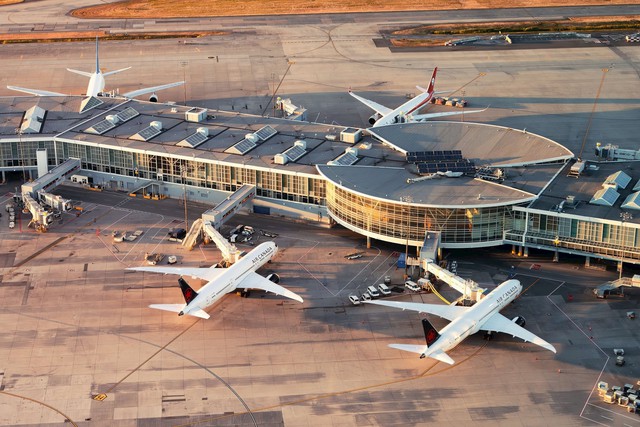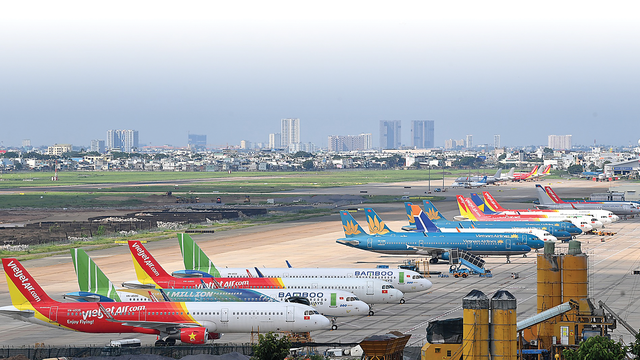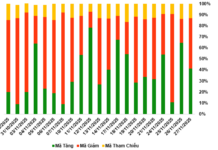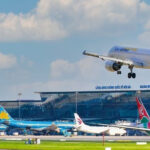
Vietnam’s Civil Aviation Authority (CAAV) has submitted a proposal to the Ministry of Construction, seeking adjustments to the master plan for the development of the national airport system during the 2021–2030 period, with a vision extending to 2050. The key highlight is the proposed addition of two airports, Mang Den (Kon Tum) and Van Phong (Khanh Hoa), to the national airport network.
According to industry experts, the inclusion of Mang Den and Van Phong airports in the planning network stems from development directives approved by the government.
Specifically, the regional planning for the North Central and Central Coastal regions identifies Khanh Hoa as a growth hub, aiming to develop Van Phong into a regional service and logistics center. Meanwhile, the Central Highlands regional plan positions Mang Den as a national tourism area, necessitating an efficient infrastructure system connecting it to the Central Coastal region, including the consideration of airport investment.
At the local level, these directives are clearly reflected in Khanh Hoa’s allocation of land for the Van Phong airport project and Kon Tum’s inclusion of Mang Den airport in its provincial infrastructure planning and the Mang Den Tourism Area plan. Subsequent adjustments to the Van Phong Economic Zone’s master plan further emphasize the role of an airport in establishing a modern maritime economic center.
Two feasibility studies for the Mang Den and Van Phong airports have been appraised by the Ministry of Construction and endorsed by Deputy Prime Minister Tran Hong Ha for inclusion in the national plan.
In the proposal submitted to the Ministry of Construction, CAAV also clarifies the scale of each project: Mang Den Airport is planned to meet 4C standards, with a total investment of approximately VND 5 trillion and an area of over 350 hectares; Van Phong Airport will meet 4E standards, with an investment of over VND 9.2 trillion and an area of nearly 500 hectares.
CAAV assesses that adding these two airports not only aligns with development directives from central to local levels but also opens opportunities to attract private investment, develop tourism and logistics, enhance regional connectivity, and support national defense and security in the South Central and Central Highlands regions.

CAAV proposes that by 2030, the country will have 33 airports capable of serving 297 million passengers annually.
In addition to proposing new airports, CAAV also recommends upgrading Quang Tri Airport from 4C to 4E standards. This adjustment is considered appropriate given the province’s strategic location on the East-West Economic Corridor, connecting Quang Tri – Salavan (Laos) – Ubon Ratchathani (Thailand), especially in light of new development demands following its merger with Quang Binh province.
Provincial planning has designated Quang Tri as a logistics and transshipment hub for the North Central and Central Coastal regions, playing a crucial role in the multimodal logistics chain. Upgrading to 4E standards, according to aviation authorities, will help attract airlines, logistics companies, and international MRO groups, enabling international flights and affirming the province’s position as a regional logistics and industrial center.
In this planning adjustment proposal, CAAV suggests that by 2030, the country will have 33 airports capable of serving 297 million passengers annually; by 2050, the system will expand to 36 airports, accommodating nearly 540 million passengers annually.
Corresponding to this expansion, the total land area allocated for airports is expected to increase to over 26,600 hectares by 2030 and reach approximately 27,800 hectares by 2050. The capital required to develop the airport system by 2030 is estimated at nearly VND 500 trillion, sourced from the state budget, non-state funds, and other legal sources.
Resolution No. 09 dated January 28, 2022, issued by the Politburo on the construction and development of Khanh Hoa Province by 2030, with a vision to 2045, sets a specific goal for Khanh Hoa to become a centrally governed city by 2030.
Recently, the province requested the Prime Minister to include the Van Phong 2 LNG Power Project in the National Power Development Plan for the 2021–2030 period, with a vision to 2050 (Power Plan VIII); to provide guidance on completing and approving the proposal for establishing the Khanh Hoa Free Trade Zone; and to supplement special mechanisms and policies for developing the Van Phong Economic Zone. These are critical foundations and conditions for the newly established Khanh Hoa Province to achieve its goals by 2030 and its vision by 2045.
Regarding Kon Tum, prior to the merger, the province was located in the northern part of the Central Highlands. Mang Den is a town in Kon Plong District, Kon Tum Province, approximately 60 km from Kon Tum City, and is known as the “Second Da Lat” of the Central Highlands. According to the plan, Mang Den is envisioned as a tourism, agriculture, and forestry production area and a key economic development focus in the eastern part of Kon Tum Province.
Investing in the Development of Gia Bình International Airport to Meet Global Standards
Continuing the agenda of the 10th Session, this morning (November 14), the National Assembly heard a report on the investment policy for the Gia Binh International Airport Construction Project.












































